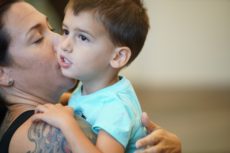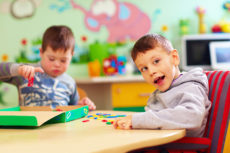Bullying and Harassment of Students with Disabilities 1. The statistics – Students with disabilities are much more likely to be bullied than their nondisabled peers. Although only 10 U.S. studies have been conducted on the connection between bullying and developmental disabilities, all of these studies found that children with disabilities were two to three times more likely to be bullied than their nondisabled peers. (Disabilities: Insights from Across Fields and Around the World; Marshall, Kendall, […]
Category: Education
Bullying and Children with Disabilities and Special Health Needs
Children with disabilities—such as physical, developmental, intellectual, emotional, and sensory disabilities—are at an increased risk of being bullied. Any number of factors— physical vulnerability, social skill challenges, or intolerant environments—may increase the risk. Research suggests that some children with disabilities may bully others as well. Kids with special health needs, such as epilepsy or food allergies, also may be at higher risk of being bullied. Bullying can include making fun of kids because of their […]
Cultivating Executive Function In Children with Autism Spectrum Disorders
What is Executive Function? Babies and little children typically react to any stimulus they encounter in a manner that is impulsive, concrete and present-oriented. They have not yet developed organized play and so they engage in a kind of sensory “muck-about”, going from one stimulus to the next, impulsively putting their hands in things and putting things in their mouths. Their play is often disorganized and repetitious. As children develop, however, they are increasingly able […]
Two quantitative studies find that black students are under-identified for disabilities at school
Decades of research have documented that students of color, particularly black children, are disproportionately classified by schools as having disabilities. In 2016, 12 percent of black children across the nation received services at school for disabilities ranging from emotional disturbances to physical disabilities to intellectual impairment. Only 8.5 percent of white children received those services. The disability rate for Hispanic students — 9.4 percent nationally — is only slightly higher than for whites and the disparity […]
Why students with disabilities are capable of graduating on time. This is why they’re not.
U.S. education system is failing students with special needs. by Sarah Butrymowicz and Jackie Mader As a teenager, Michael McLaughlin wanted to go to college. He had several disabilities, including dyslexia and bipolar disorder, which threatened to make the road ahead more difficult. He sometimes had trouble paying attention in class and understanding directions. He also had an IQ of 115 — on the upper ranges of what is considered average. With help, he should […]





